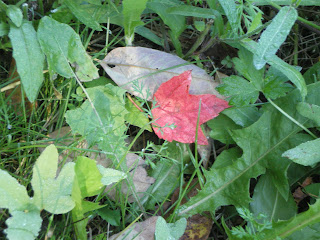Thanksgiving means many things to different people. To some it is the gathering around the family table to enjoy Turkey and all its trimmings. To others it is a time of fasting to remember the plight of one's ancestors. For our family it is a time of quiet reflection of all the blessings bestowed on us during the previous year.
Most of yesterday was gray and rainy however close to sundown, the western horizon suddenly was aglow with a golden light. When I looked to the east, the sky was still a dreary gray and then it appeared: a perfect rainbow stretched across the valley, its colors deep and vibrant. It reminded me that as we look forward to our bright futures from time-to-time pause and look back, else you may miss a blessing resting near your shoulder.
Most of yesterday was gray and rainy however close to sundown, the western horizon suddenly was aglow with a golden light. When I looked to the east, the sky was still a dreary gray and then it appeared: a perfect rainbow stretched across the valley, its colors deep and vibrant. It reminded me that as we look forward to our bright futures from time-to-time pause and look back, else you may miss a blessing resting near your shoulder.









































